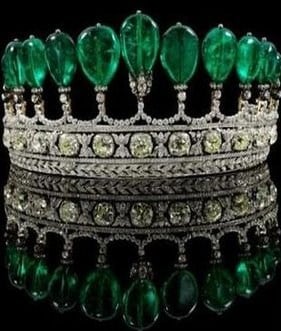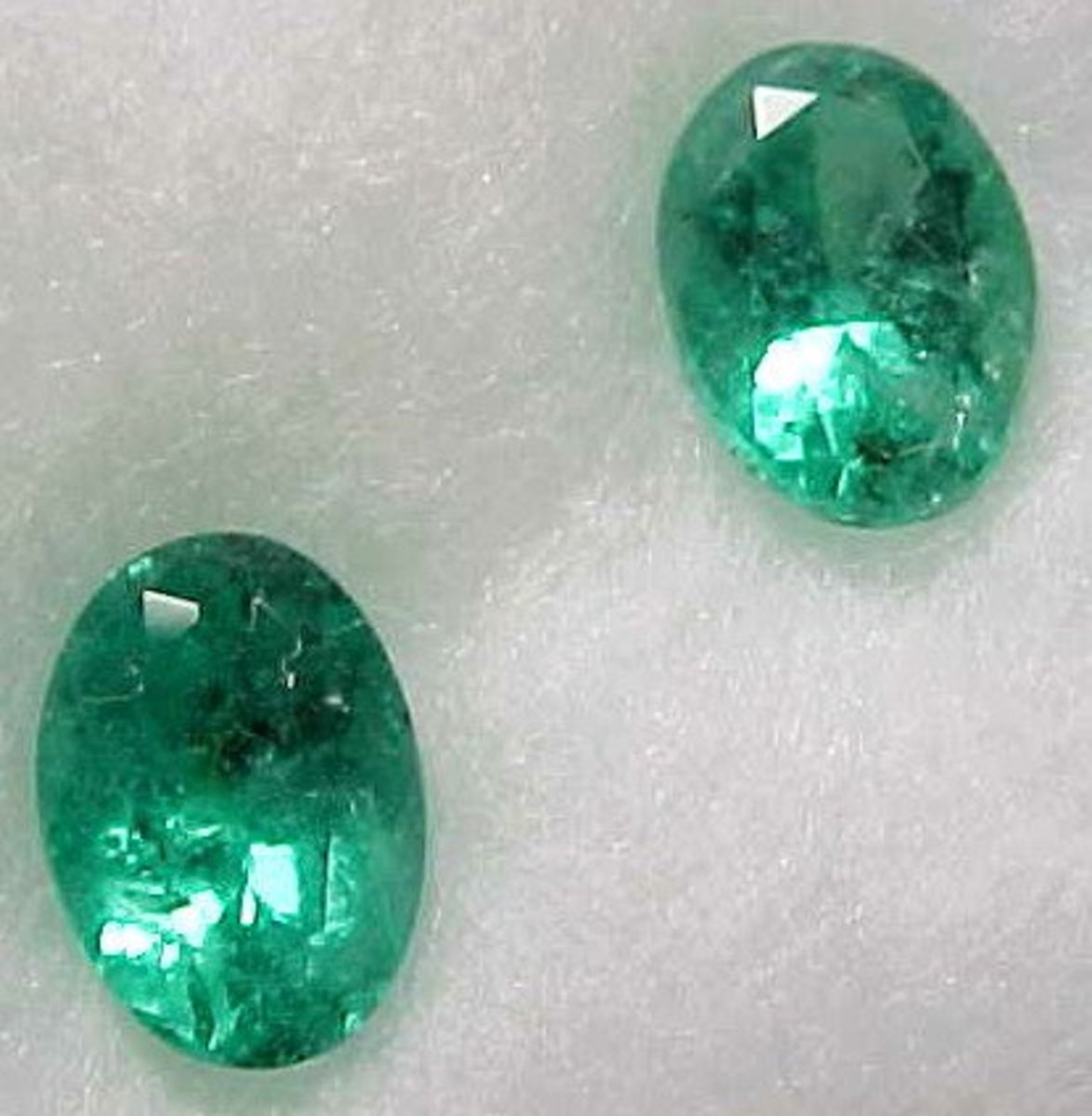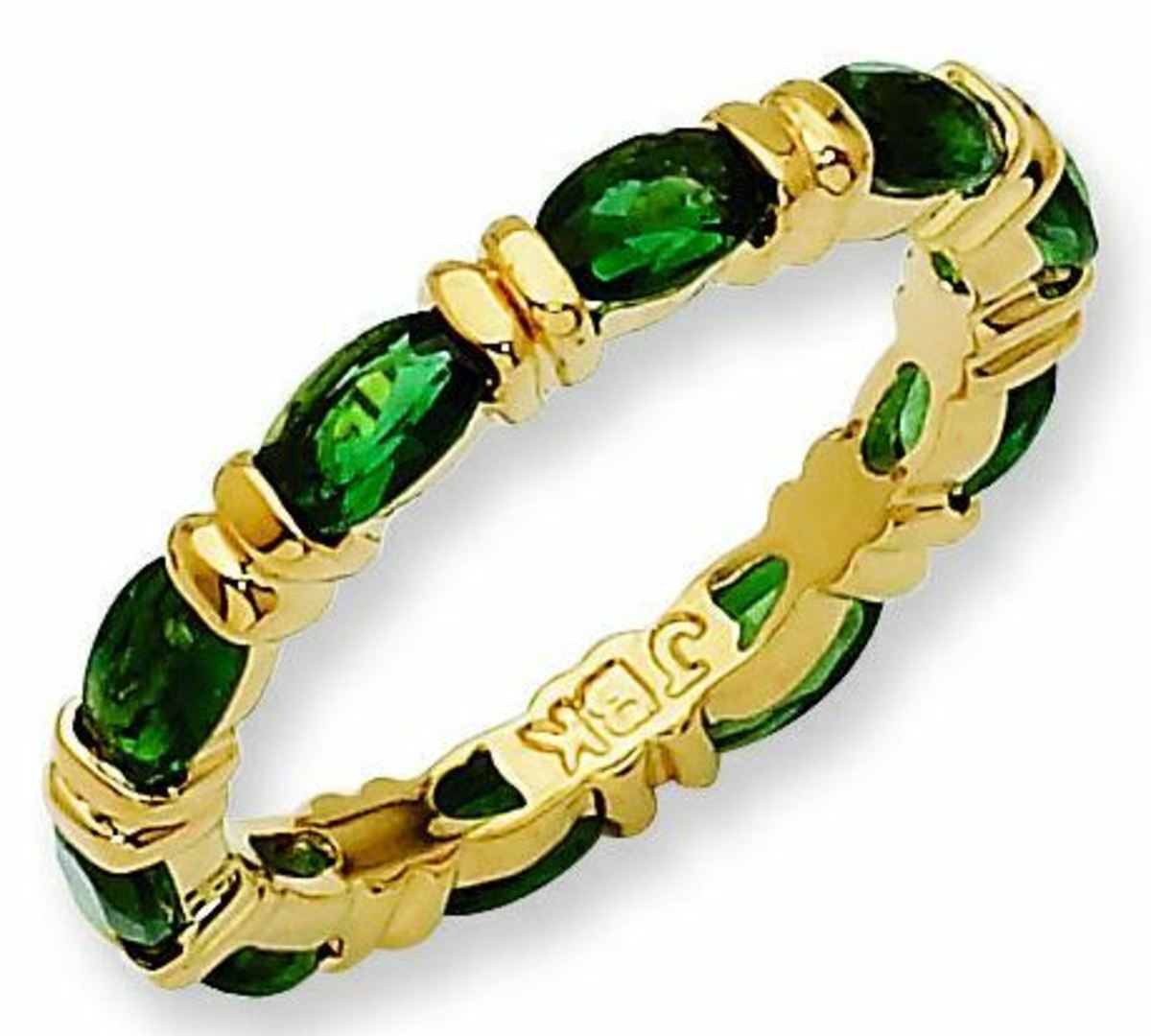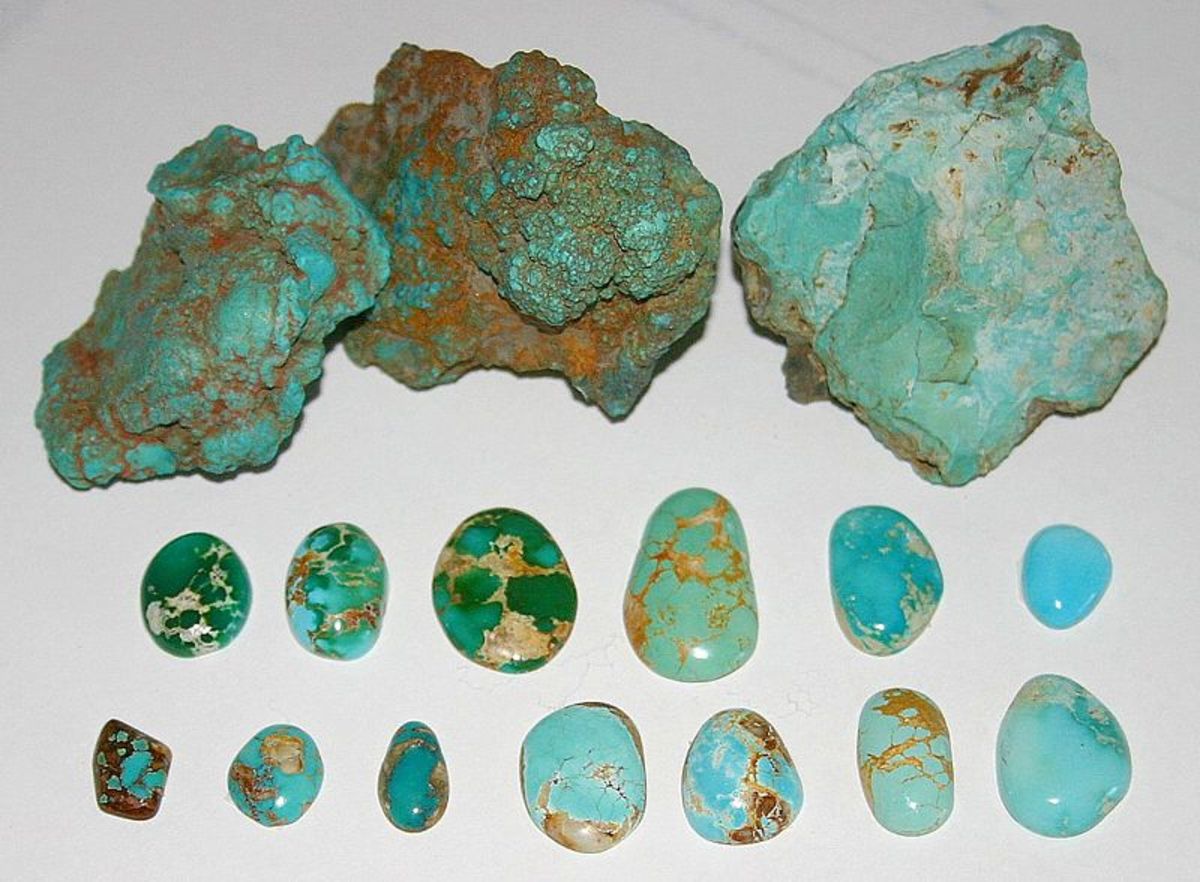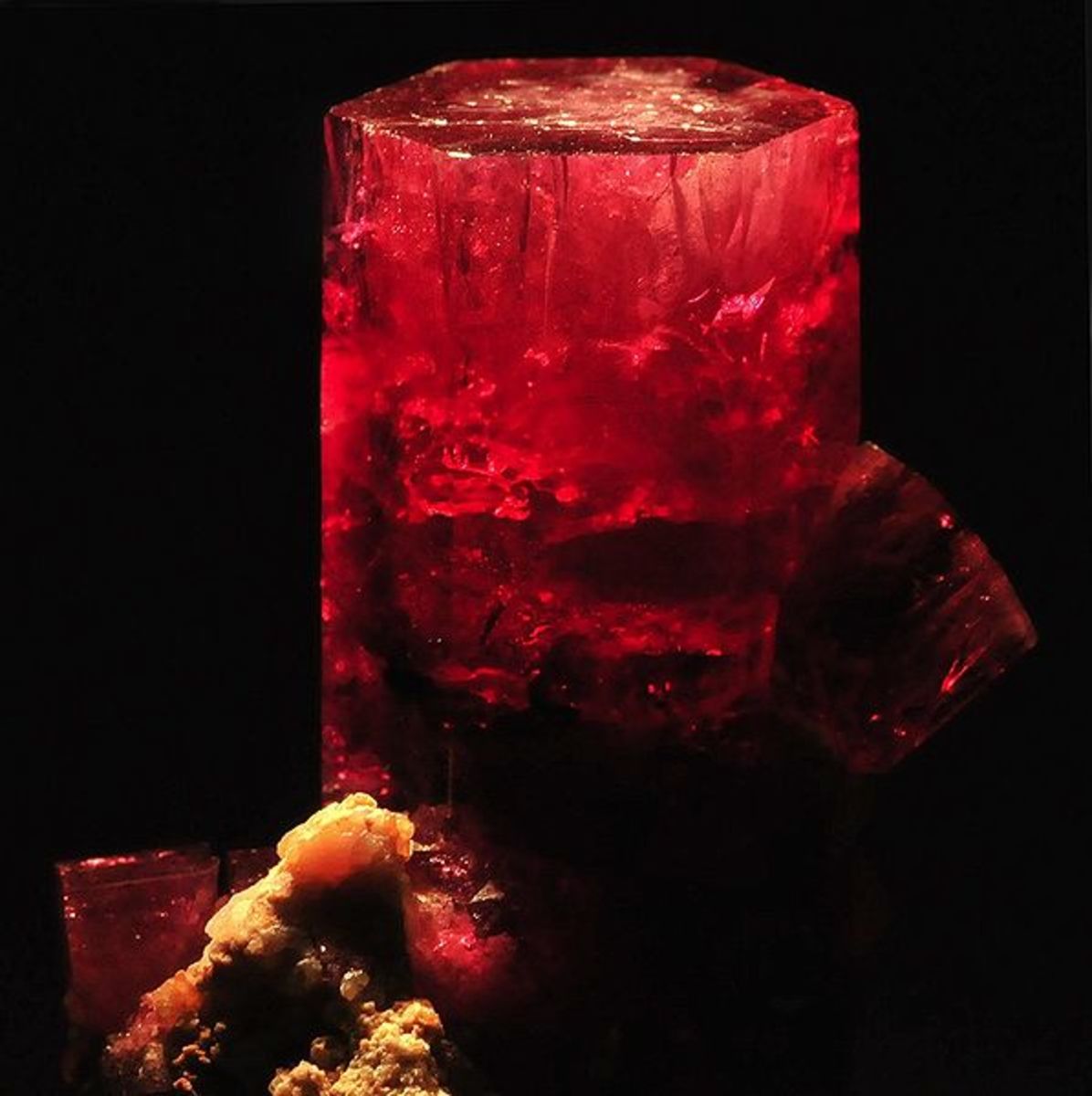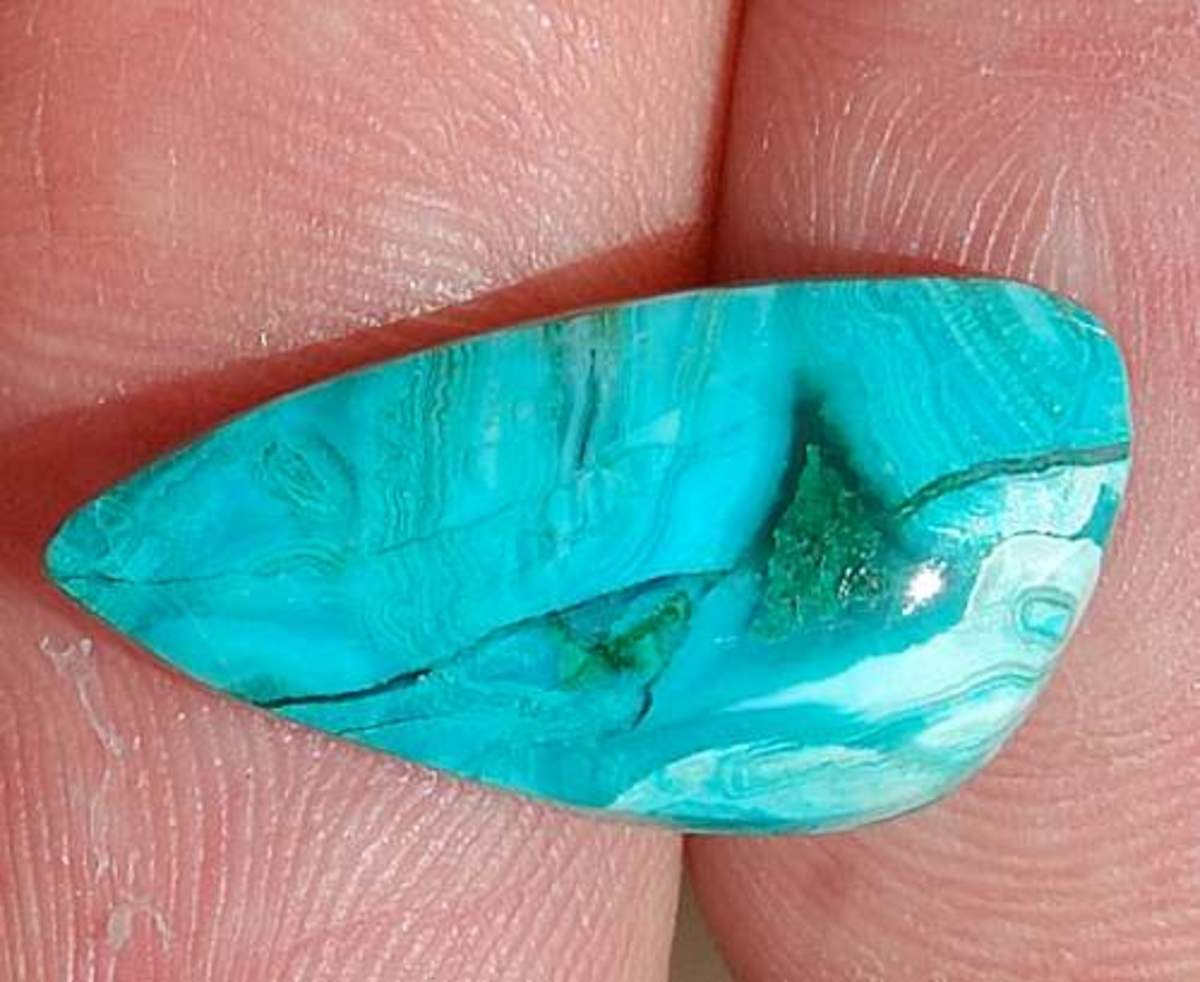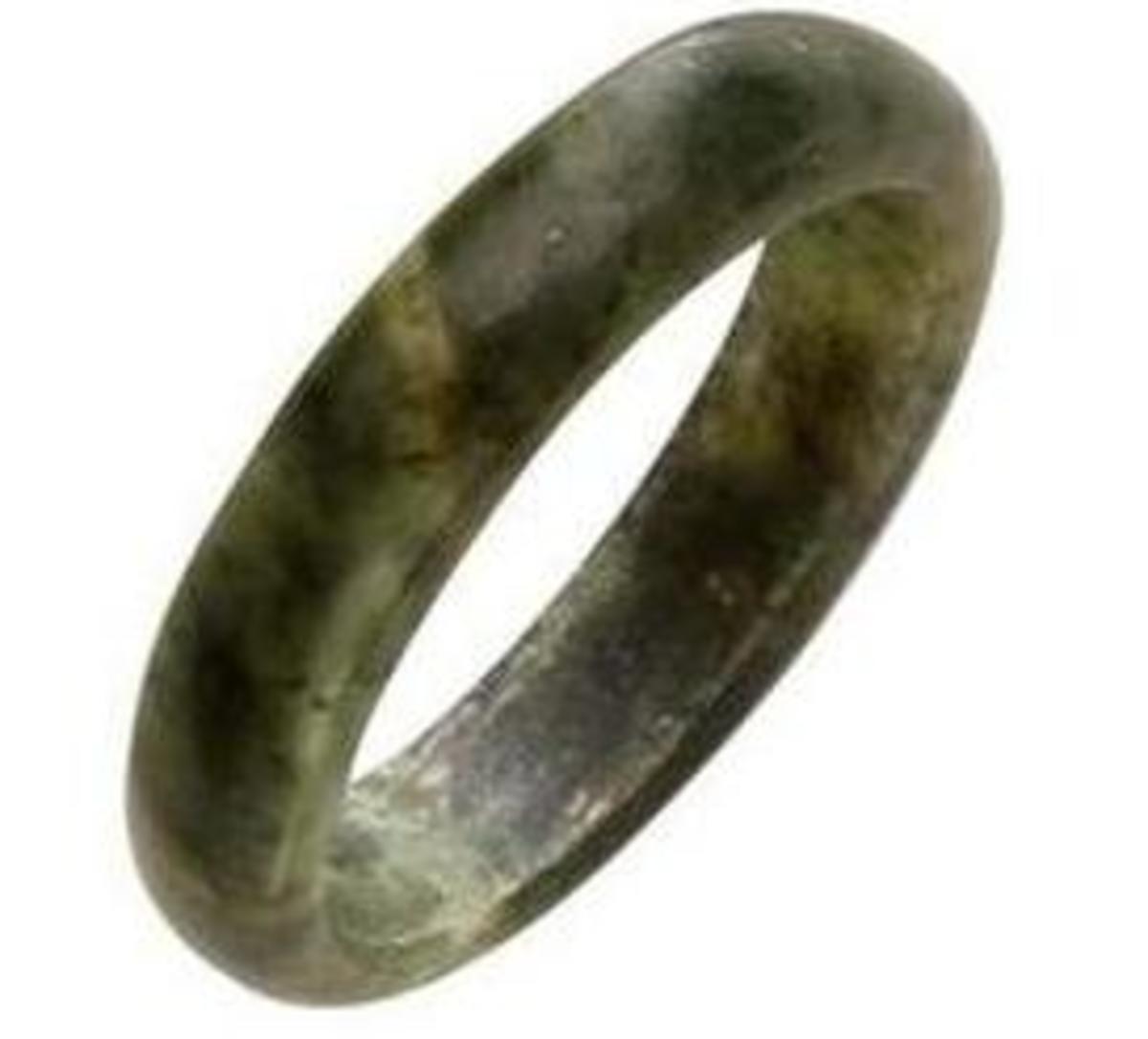Emerald: Delightful to the Eye
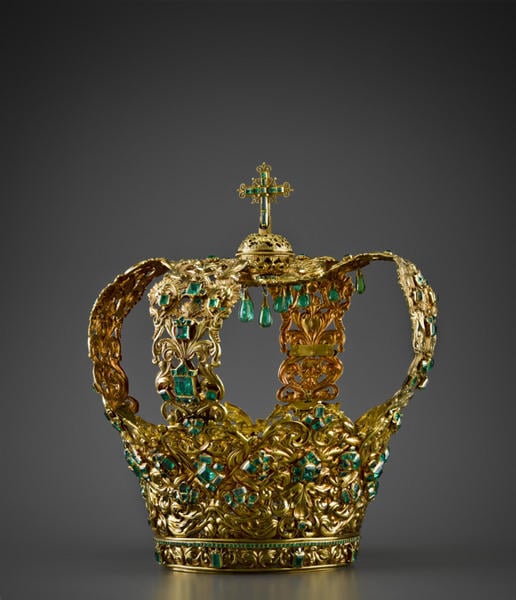
Emerald, used as the birthstone for the month of May, is one of the world’s most treasured gems. The stone is available in a wide range of prices. A fine one carat Emerald may rival the price of a Diamond, with fine quality Emeralds over 3 carats bringing some phenomenal prices, sometimes as much as $20.000 per carat. You can also buy a one pound bag of low quality uncut Emeralds for $30.00, or less, making the price per carat about 10 cents.
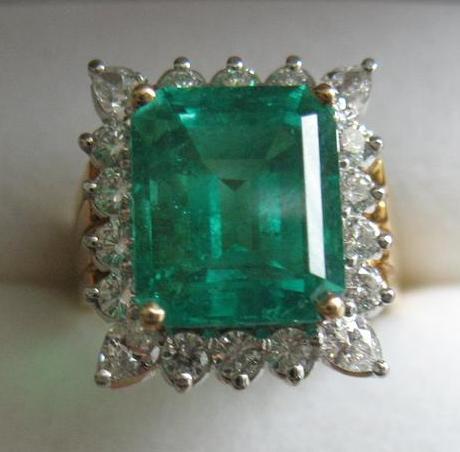
The Colors of Beryl
Emerald is a green variety of the mineral Beryl. Beryl may be colorless, yellow, light orange, pink, red, blue, brown, black, or green. The green color of Emerald is created by a touch of chromium or vanadium in the rather complex chemical formula. Not all green Beryl is considered to be Emerald, and stones that are too yellowish, or which show light, unsaturated green, should not be considered Emerald. The term “Red Emerald” has been applied to some red beryl, but gem enthusiasts scoff at the use of this term. Red Beryl is extremely rare, and worthy of a name of its own, and Bixbite is one alternate term for the material. Colorless Beryl is known as Goshenite; the yellow varieties are sometimes referred to as Heliodor; and the pink varieties are know as Morganite. The darker variates are often referred to as Maxixe Beryl, and the blues may fade. The best known member of the Beryl family, along with Emerald, is Aquamarine, a light blue variety. While Emerald and Aquamarine have the same basic chemical formula, a trace amount of iron creates the blue color in natural Aquamarine.
It should be noted that there was some dispute in the gem industry as to whether Beryl colored green by vanadium, and not chromium, should be considered Emerald. Traditionally, only Beryl with a medium to deep color saturation is considered Emerald. However, many dealers sell pale greenish stones as Emerald, although they bear little similarity to fine Emerald. Similarly, the $30 bags of uncut “Emeralds” are also seldom worthy of the name.
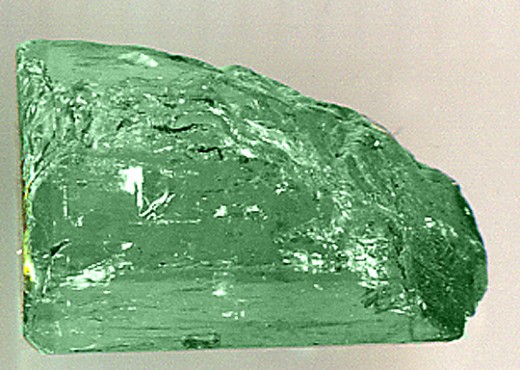
All About Emerald
Emerald is a green variety of the mineral Beryl. Beryl may be colorless, yellow, light orange, pink, red, blue, brown, black, or green. The green color of Emerald is created by a touch of chromium or vanadium in the rather complex chemical formula. Not all green Beryl is considered to be Emerald, and stones that are too yellowish, or which show light, unsaturated green, should not be considered Emerald. The term “Red Emerald” has been applied to some red beryl, but gem enthusiasts scoff at the use of this term. Red Beryl is extremely rare, and worthy of a name of its own, and Bixbite is one alternate term for the material. Colorless Beryl is known as Goshenite; the yellow varieties are sometimes referred to as Heliodor; and the pink varieties are know as Morganite. The darker variates are often referred to as Maxixe Beryl, and the blues may fade. The best known member of the Beryl family, along with Emerald, is Aquamarine, a light blue variety. While Emerald and Aquamarine have the same basic chemical formula, a trace amount of iron creates the blue color in natural Aquamarine.
It should be noted that there was some dispute in the gem industry as to whether Beryl colored green by vanadium, and not chromium, should be considered Emerald. Traditionally, only Beryl with a medium to deep color saturation is considered Emerald. However, many dealers sell pale greenish stones as Emerald, although they bear little similarity to fine Emerald. Similarly, the $30 bags of uncut “Emeralds” are also seldom worthy of the name.
Emeralds tend to have a great number of natural inclusions, while its close relative, Aquamarine, seldom has noticeable inclusions. The nature of the clarity of Emeralds is actually “romanced” with the inclusions referred to in terms such as jardin, a French term meaning “garden”. Often, fissures break the surface of the stone. Traditionally, colorless oil has been applied to many of these stones. Cedar oil has some optical properties similar to Beryl, and the oiling minimizes the appearance of the fissures. Occasionally, tinted oils have been used, which improve the color of the stone as well. More modern lab products, such as Opticon, have also been used. As these materials can dry out, allowing the stone to revert to its natural appearance, they should always be revealed. Any treatment which impacts the value or durability of a stone should be revealed, along with any non-permanent treatment. Virtually all Emeralds are oiled, so there is no impact on value or durability. However, the treatment is considered to be less than permanent. Use of colored oils is also frowned on, as being deceptive in nature. Epoxy resins have been added to the list of modern treatments used to improve the appearance of Emerald. While these materials are considered more permanent, and may actually improve the durability of the stone, disclosure is still required. The presence of enhancements can often be detected with proper magnification; however, the nature of the enhancement often involves specialized equipment that many labs do not possess. The material used is used to fill very small fissures, so there is not even a serious impact on gem weight. It is estimated that perhaps 90% of the Emeralds marketed are treated in some manner.
The presence of natural inclusions in Emerald is a major feature of the stone. Inclusions may appear in spiral forms, created by water drops left during formation. Small liquid-filled bubbles may cause a fingerprint-like inclusion. Iron, often in the form of small pyrite crystals may be seen, along with tubular inclusions and growth patterns. Two and three phase inclusions can occur, which actually give clues to origin. Some experts can determine country or region of origin, based on the nature of the inclusions.
Emeralds are relatively hard, with a rating of 7.5-8 on the Moh’s scale. They are somewhat brittle, however, and the fragility is increased by the presence of inclusions. The Emerald Cut was developed for this stone, as the name implies. The step-cut stones may be rectangular or square. They show off the color of a fine Emerald, but also offer a certain degree of protection to the stone. The beveled corners are far less prone to chipping and breakage than a pointed corner. The girdle of the stone, the area separating the top of the stone from the bottom, are often quite thick. This is because a thinner girdle is more prone to damage. Somewhat unique setting practices are sometimes used with Emeralds, and these usually indicate the setter’s desire to not damage the stone.
Stories of Emerald are reported in ancient accounts. Cleopatra was noted for wearing Emeralds. Mines near Coptus, in Egypt, may have been the major source for Emeralds in the ancient world. Nero was said to have used an Emerald as a lens to view events in the Coliseum. In his works on natural history, Pliny the Elder denounced the habit of engraving on the surface of Emeralds, so enamored was he of the intense green color of fine Emerald. We writes “There is no stone, the color of which is more delightful to the eye”, and claimed that ancient lapidaries would rest their eyes by staring into an Emerald.
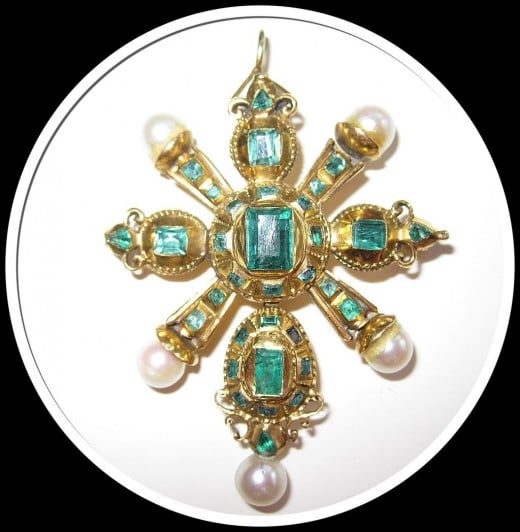
Emerald Sources
Afghanistan and Pakistan are modern sources for the stones, but no evidence exists that they were sources for the stones in ancient times. The Mughal Empire of India was noted for some of the fine gems they possessed, including Emeralds. However, many of the Emeralds they possessed date from after the discoveries of Emeralds in South America in the 16th Century. Some of their finest gems, such as the Mogul Mughal, a 217 carat engraved Emerald, have been dated to this period, and identified as products of mines in Columbia.
The South American mines produced finer quality Emeralds than the world had seen before, and in much greater quantities. The treasure ships returning to Europe carried Emeralds, along with the gold and silver of South America. Wonderful stones have been recovered in such ventures as the reclaiming of the Atocha treasures by Mel Fisher. The native people of South America had mined emeralds and worked the alluvial deposits for centuries before the arrival of the Europeans, and carved Emerald pieces dating back 2000 years are known. Mining, under Spanish rule, used slave labor of the natives and of imported slaves, and was a cruel and harsh existence for the miners.
Colombia is recognized as the source for the finest Emeralds in the world. Two major mining districts exist: Chivor and Muzo. The Chivor distrct has two major mine, Chivor and Gachala. The Chivor Mine has produced stones since the mid-1500s, with many stones mined by slave labor, under incredibly harsh conditions. The blue-green beauties produced are a bit larger than most Emerald crystals, and are marked by three-phase inclusions. The “Patricia”, an Emerald crystal of 632 carats mined here in the 1920s, in one of the world’s finest. The Muzo mines are located in the Boyaca district, and include the Muzo, Coscuez, and Pena Blanca mines. These mines produce similar stones, although there appears to be a slightly larger range of color hue and saturation in the Coscuez stones. Stones from both of these mines have a yellowish-green color. Both are open pit mines, with many workers in the official mining areas, as well as many additional people culling through the alluvial stones produced in the mining process. I addition to the dangers of mining, a number of workers die violent deaths every week at the hands of other miners. Buyers bringing cash into the area for emerald purchases and those taking Emeralds out of the area, also risk robbery and death, from the criminals that prey on the area. Colombia nationalized the mines in the 1940s, using the violence in these areas for a reason. Today, the Muzo and Coscuez are operated as joint ventures with private firms.
Brazil supplied the world with inexpensive and lackluster Emeralds for many years. However, in the last 30 years, finer stones have been coming out of the country’s Minais Gerais area. The discovery that many of these stones were colored by vanadium, rather than chromium, led to disputes in the gem industry as to whether the stones were truly Emerald, or merely Green Beryl.
Zambia has produced Emeralds since the mid-20th century. It was only in the 1970s that these stones began to have a major impact on the gem world. The stones had a slightly different color, and their relatively high clarity led to the Israeli cutting industry producing finished stones that were cut to produce greater brilliance than the South American stones. The absence of the fissures prevalent in the South American stones also means that the Zambian goods are less likely to be enhanced.
Today, Colombia is still the largest producer, and their stones are generally the most highly valued. Zambia probably ranks second, in quality and volume. Brazil’s production is a bit smaller, and provides many stones for the lower end of the market, in terms of value. Many other localities produce Emeralds in smaller quantities, and recent decades have produced some finds that have surprised the gem world, like the stone produced in mining operations in North Carolina.
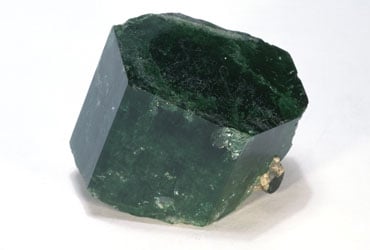
Notable Emeralds
The Museum of Natural History, in New York, and the Smithsonian have fine collections of Emeralds. The treasury of Iran may have the largest collection, including the Emerald-studded Nadir Throne, the Pahlavi Crown, and other items. The ownership of one of the world’s greatest Emerald treasures, the Crown of the Andes, is unknown. It contains over 1500 carats in Emeralds. When examined prior to auction in 1995, it was determined that it may have actually been made over a period of several centuries, although legend states it was created in the late 1500s as an offering during a smallpox outbreak. It did not sell at the auction, but did resurface for a display of Spanish religious artifacts several years ago.
One of the higher priced pieces at auctions this century was a tiara made for Princess Katharina Henckel von Donnersmarck around 1900. Containing over 500 carats in Emeralds, the piece sold for nearly $13,000,000, at Sotheby’s Geneva in 2000. Other notable Emeralds include an 858 carat stone in the Smithsonian, considered to be one of the finest quality crystals in the world. This stone, The Galacha, comes from the mining region of the same name, in Colombia. These mines have only been worked since the middle of the 20th century, and produce crystals that have less inclusions than many Colombian stones. These mines have produced other notable stones, including crystals of over 7000 carats and 16,000 carats. A Russian Emerald of 1915 carats is in the collection of the Museum of Natural History in Los Angeles. The Duke of Devonshire, an uncut stone of 1383 carats is considered to be the largest fine quality Emerald crystal by many. The stone, which originated in the Muzo mines, in displayed in the Natural History Museum in London. A cut Emerald of 57,000 carats has recently come on the market. While not of fine quality, thew 11.5 kilogram weight is notable.
Oddities, Synthetics, and Care
One unique form taken by Emerald is the Trapiche Emerald. These stones have 6 radiating arms projecting from the center of the stone. While they resemble a star, unlike Star Sapphire or other gems that display asterism, the arms are in a fixed position, and do not appear to move with the light. Normally cut en cabochon, these stones only come from three mines in Colombia, including Muzo and Coscuez. There has been a report of one occurring in Madagascar.
True Star Beryl does exist, but no Emeralds are known to produce this effect. Emeralds exhibiting a cats-eye effect are known.
Emerald has been duplicated over the years with green glass, and with glass and Garnet doublets. Man-made emeralds, produced by hydrothermal and flux-growth processes, have been on the market since the 1960s.Some Russian hydrothermal stones mimic the appearance and composition of Colombian stones quite well.
Fine Tsavorite Garnet and Chrome Tourmaline occur in color ranges that overlap with Emerald. These stones may also be great alternates for Emerald, in cases where rougher wear may more easily damage an Emerald.
Emeralds should be worn with care, as the stone can chip or crack easier than some other gem materials. Harsh chemicals, cleaners, and solvents should be avoided. Ultrasonic or steam cleaning of the stone should be avoided.
